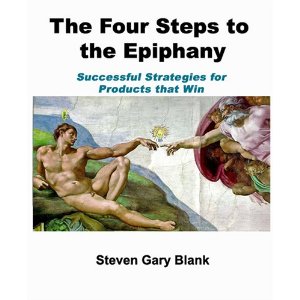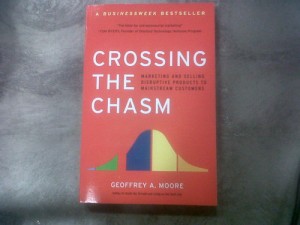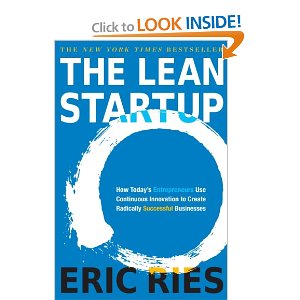I have read a lot of startup books and books about software business in general. Most of them describe different activities, that software companies should be doing with the help of various tools, frameworks and processes. As a reader I used to feel overwhelmed with all the information, especially when every idea was presented as something important that cannot be neglected by any company under any circumstances. I lacked perspective of which activities should be prioritized and which should be completely skipped at a certain stage of a company.
Most of the books presenting great frameworks for analyzing different things, will not tell you how to obtain the input needed for these frameworks. Bad input leads automatically to bad output, which means that these frameworks are completely useless unless you have all the data. Bigger companies may already have a lot of market data and can somewhat easily get more, since they probably already have a good understanding of the market. Startups don’t have. Many books let you believe that you either need to know all this in advance or if you are lucky they present a way to do market research in some classical way that only a big company can afford to do well.
I came across 3 books that managed to put everything in its right place for me. These books helped me to understand what is really needed in a startup and when to focus on it.
1. The Four Steps to the Epiphany: Successful Strategies for Products that Win, by Steve Blank
 I found Steve Blank’s blog a couple of years ago from a TechCrunch article about the long lost formula of startup success. After reading some blog posts about the Customer Development model I realized that this is exactly the missing piece to the puzzle, so I bough the book. It’s a step-by-step guide to build a software company. It tackles the core problem of how to find which customer problem to solve and how, using an iterative process called Customer Development. All the other business books that I had previously read had made me think that good entrepreneurs know from the beginning which problem to solve. Also various books about usability, focusing on finding the solution to a predefined problem by doing interviews, usability tests and various other activities with the customers had as well put me off the track. They made me blind to understand that the real point is not to directly find the solution to the customer problem but instead to find a problem that is worth to solve; a problem around which it is possible to build a profitable and scalable business.
I found Steve Blank’s blog a couple of years ago from a TechCrunch article about the long lost formula of startup success. After reading some blog posts about the Customer Development model I realized that this is exactly the missing piece to the puzzle, so I bough the book. It’s a step-by-step guide to build a software company. It tackles the core problem of how to find which customer problem to solve and how, using an iterative process called Customer Development. All the other business books that I had previously read had made me think that good entrepreneurs know from the beginning which problem to solve. Also various books about usability, focusing on finding the solution to a predefined problem by doing interviews, usability tests and various other activities with the customers had as well put me off the track. They made me blind to understand that the real point is not to directly find the solution to the customer problem but instead to find a problem that is worth to solve; a problem around which it is possible to build a profitable and scalable business.
Order you copy here!
2. Crossing the Chasm: Marketing and Selling Disruptive Products to Mainstream Customers, by Geoffrey A. Moore
 Crossing the Chasm has been said to be the bible of entrepreneurial marketing. It discusses the technology adoption life cycle and the so called chasm, which lies between early adopters of a product and the early majority. It is known to be very hard to get a technology product from visionary customers into the mainstream market. This book is most certainly a good read for anyone who is going to get their software product out in the mainstream. One way to look at it, is that Steve Blank’s book is the one helping you to get to the chasm and this book helps you cross it. But I think there is much more to it than that.
Crossing the Chasm has been said to be the bible of entrepreneurial marketing. It discusses the technology adoption life cycle and the so called chasm, which lies between early adopters of a product and the early majority. It is known to be very hard to get a technology product from visionary customers into the mainstream market. This book is most certainly a good read for anyone who is going to get their software product out in the mainstream. One way to look at it, is that Steve Blank’s book is the one helping you to get to the chasm and this book helps you cross it. But I think there is much more to it than that.
For me the book additionally helped me put all the different activities I previously had learned from other books into the right stages in the technology adoption life cycle. I had read from various other books several statements, such as “You must create a strong brand for your company”, “You need to prove that you are the market leader”, “There must be something new that gives a competitive advantage to the first customers”, etc. All these statements are true, but at different stages in the technology adoption life cycle. This book helped me understand that. Also understanding the behaviour of customers from different stages helps a startup understand which customers to focus on and which to leave for later. In my previous company, with PiX’n’PaLs StoreFront, I wasted an enormous amount of time trying to sell to late majority or laggards.
Order your copy here!
3. The Lean Startup, by Eric Ries
 Although I had been reading Eric Ries blog before the book and was already quite familiar with many of the ideas in The Lean Startup book, I found it to be very useful in helping me understand how to validate business hypotheses with an agile software development process; it is actually possible to take it so far that all the “stories” that developers build are considered tests. Instead of an engineer getting a job to implement a feature, he would get a job to find out whether a feature helps the company in its goal. This goal may be to grow virally, convert users to paying customers or something else. Running a process like this will get a product built with only features that are needed and the chances of reaching product-market fit are higher. I think it contained many of the missing pieces to the puzzle regarding how to actually run the tests and what to measure and what not.
Although I had been reading Eric Ries blog before the book and was already quite familiar with many of the ideas in The Lean Startup book, I found it to be very useful in helping me understand how to validate business hypotheses with an agile software development process; it is actually possible to take it so far that all the “stories” that developers build are considered tests. Instead of an engineer getting a job to implement a feature, he would get a job to find out whether a feature helps the company in its goal. This goal may be to grow virally, convert users to paying customers or something else. Running a process like this will get a product built with only features that are needed and the chances of reaching product-market fit are higher. I think it contained many of the missing pieces to the puzzle regarding how to actually run the tests and what to measure and what not.
Order your copy** here!**
Nowadays, most of these theories in these three startup books may be more known in the startup community than they were when I was an entrepreneur. Still, if you have heard pieces of advice from different people here and there, you may have a poor understanding of the big picture. Thus, I recommend that anyone who intends to start a software company the first time reads these books.
